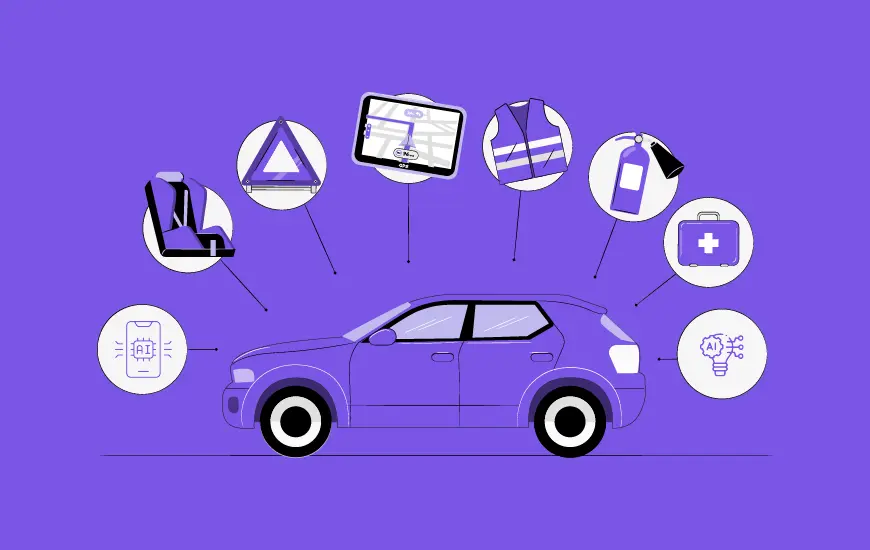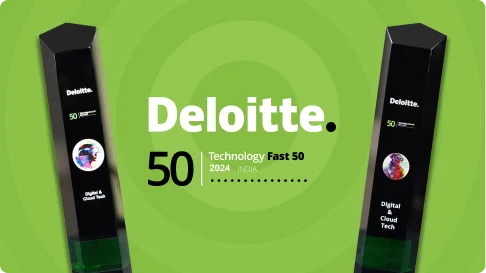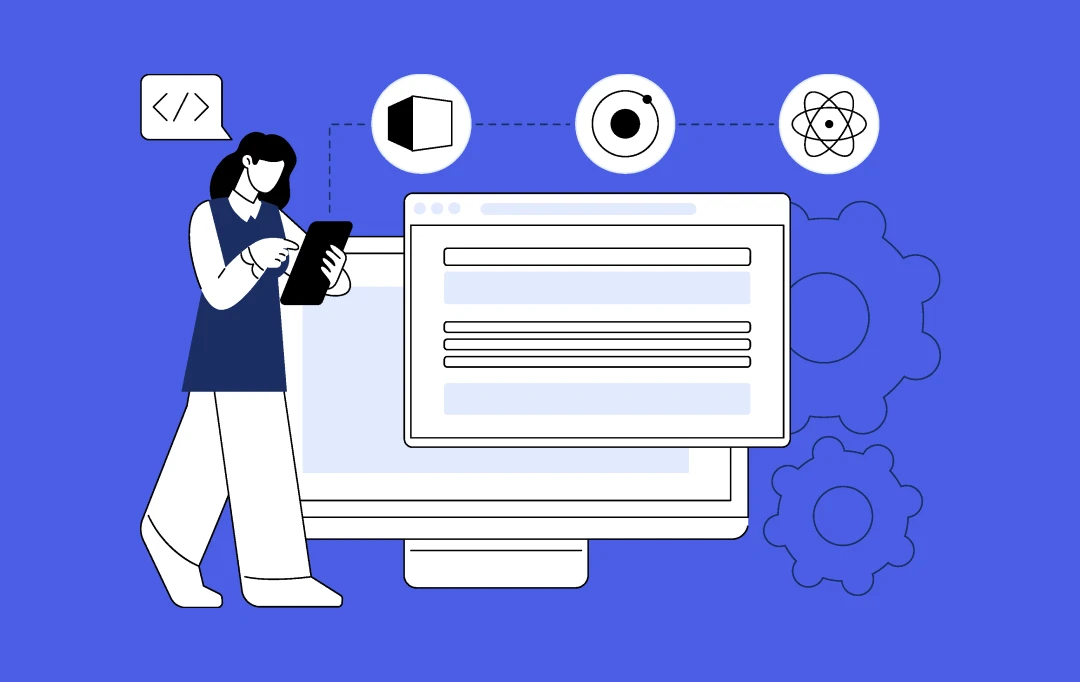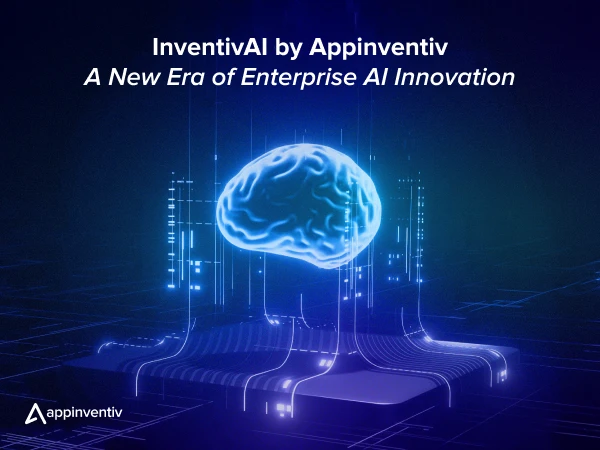- Who is your target audience for MVP validation?
- 21 Solid Ways to Test MVP
- 1. Fundraising
- 2. Blogs
- 3. Customer interviews
- 4. Videos
- 5. Pre-order Pages
- 6. Social-media surveys
- 7. Paper prototypes
- 8. Emailing
- 9. Landing pages
- 10. Competitive products in the market
- 11. A/B Testing
- 12. Piecemeal MVPs
- 13. PPC campaigns
- 14. Micro-Surveys
- 15. Ad campaigns
- 16. Services and Platforms
- 17. Manual-first MVP
- 18. Concierge MVPs
- 19. Digital prototypes
- 20. Single feature MVP
- 21. Software testing
- Final Note
Every day people come up with new, unique ideas, and find ways to bring them to reality. The trick to achieving your goals is understanding how to plan the product development where you save time and resources without compromising the USP of your product.
Building a Minimum Viable Product allows entrepreneurs to create a working software and visualize the market clearly. Testing and validating your MVP is a means to ensure you are not wasting valuable resources on a product that doesn’t target a viable market or is not technically feasible.
To gain the validation of customers and check the usability of the product, it needs to start with one test level and then shift on to the next level. The testing is done to verify basic functional elements such as user integration and functionality and functionality can that help to deliver a sound minimum viable product while still respecting cost limitations.
Therefore, just building an MVP is not enough, having a test plan for an MVP validation model is also important. A company may think that the product can satisfy the customers’ needs but until and unless the MVP test is run and successful, it can not be said for sure.
[Also Read- Why MVP is essential for business success and how can your business approach it.]
Who is your target audience for MVP validation?
Below are the three potential groups of the target audience for your MVP validation process:
Early Adopters- They are the first customers who feel the need for the product. Early adopters are always eager to share feedback and tend to avoid mistakes.
Evangelists- They are the subject matter experts or MVP’s domain experts who carefully examine each element and its functionality and share a detailed report. Evangelists are interested in seeing the evolution of product development from early-stage to final product.
Potential Investors- They are the experts who test your product so that they can invest in your product idea.
Now, as you have understood the concepts like what is an MVP and the target audience for MVP validation, it’s time to discuss the best MVP testing methods to build a successful and viable product.
21 Solid Ways to Test MVP
There are various tactics for testing minimum viable products, but in this post, we will discuss the best-tested ones to ensure that your MVP meets user requirements and quality standards.
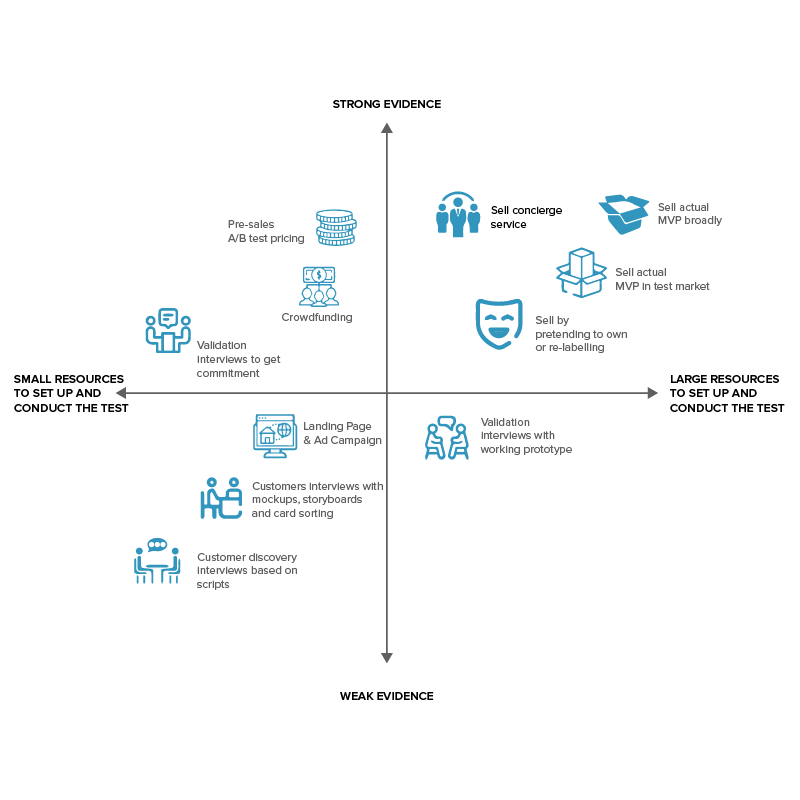
1. Fundraising
Crowdfunding is a way you can test whether your app will do good in the market or not. Platforms like Kickstarter and Indiegogo are filled with MVPs that get funding from people who find the product interesting enough. It gives your product exposure to a group of interested and active users. These interested users are evangelists and investors who test your MVP efficiently. The money raised from these platforms will help in building the final product to launch in the market.
2. Blogs
Having a blog is like having a platform for two-way communication with the prospective users of your product. It is the most crucial and foundational aspect that allows open communication between product teams and the market experts. Blogs are a way to discuss and gather feedback about a product. It will give you an honest opinion about the product by seeing how much keenness the users are showing.
3. Customer interviews
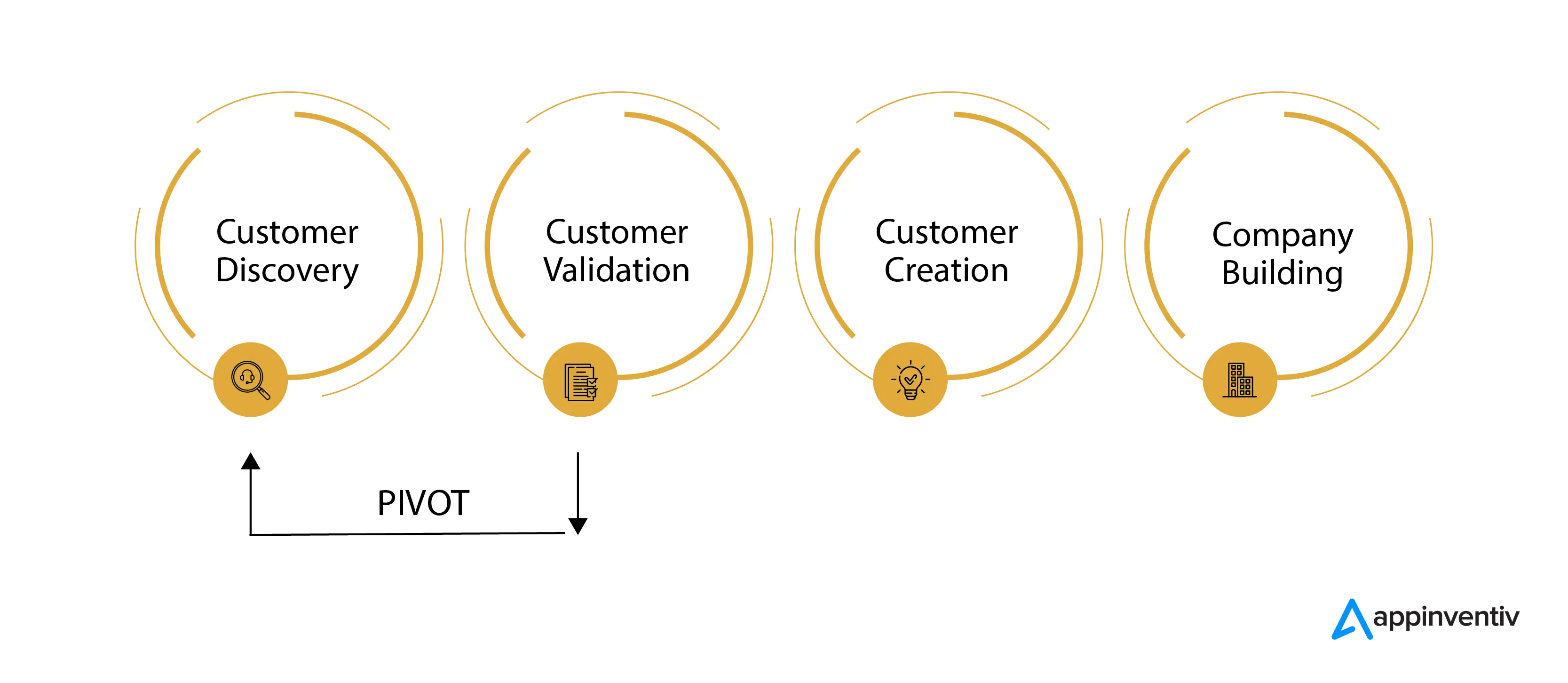
Talking face to face with customers provides the most honest reviews. People may lie or sugarcoat their opinions online but when it comes to face-to-face feedback, it’s as honest as it can get. Interviewing the customers is usually done in a casual manner but is rather descriptive. The interviewer states assumed problems to get feedback on the same.
4. Videos
It is quite obvious that if an image can speak a thousand words then a video can speak millions. Explainer videos can be used by developers to demonstrate the functionality of the product and answer questions like what, how, and why. At the end of the video, the viewer gets a clear picture of what the product is, how it works and why we need it. Dropbox is an example of such a case where they used a video to gather subscriptions for a product that didn’t even exist.
5. Pre-order Pages
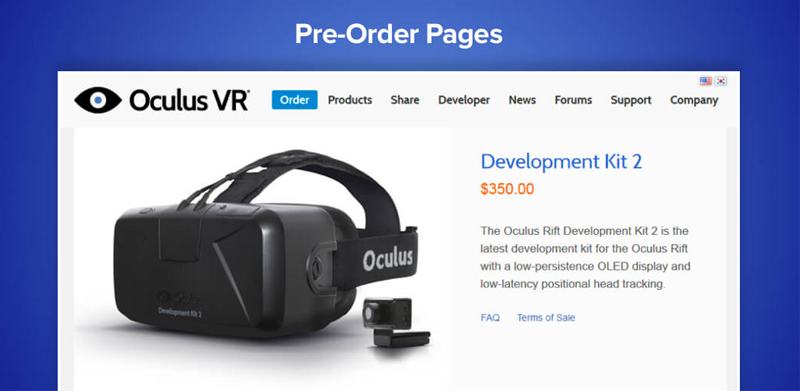
Pre-orders are quite popular with books, gadgets, and other interesting products. When it comes to pre-ordering, the idea is to convince the users with your product enough to make them pay for it beforehand. However, there is a chance that users may not be willing to put their money at risk way before the product is even born. For this, the product presentation must be as appealing as possible.
Oculus Rift is a prime example of this method as they released a pre-order page for their development kit even before they started production. It helped them map and validate their idea by analyzing the product demand.
6. Social-media surveys

Social media and surveys are quick and easy and most of the time give honest feedback. Of course, it works when the focus is on the few right questions that are short and rapid to evoke a great response rate. For instance, Facebook surveys have a feature that allows users to add their own options as an answer which gives interesting insights. Another good reason to use social-media surveys is that users don’t need to go out of their way to fill in the surveys.
7. Paper prototypes
Unlike digital prototypes, these are tangible and are inexpensive in nature. A paper prototype is built to understand a product’s user experience. Anyone in the team who can use these prototypes understands how the product works. It is very useful in the case of physical products like mobile phones, tables, chairs, etc.
8. Emailing
Sending emails to see how many users click on the links or follow up with the email is another way of testing MVP. However, it works best when you already have a list of potential prospects with verified email addresses. For every email campaign, make sure to track and analyze the critical metrics such as click rate, open rate, bounce rate, and clicks on your redirected link. You can use email marketing tools or built-in plugins for efficient tracking of metrics in real-time.
9. Landing pages
Landing pages are the first pages the potential prospects find out about your business. A landing page can show the interest of the customers with the way they behave and interact on the page. Building a landing page should always be followed by tracking analytics with the help of tools like Google Analytics, KISSmetrics, etc.
10. Competitive products in the market
There is a high chance that the product you are thinking about launching is already present in the market. Don’t feel bad as it’s an opportunity to test your MVP at a lower cost as you already have a product to compare. Try analyzing the competitor’s product and see what they have that your product doesn’t. Also, realizing your product’s unique features can help you become the strongest player among the competition.
11. A/B Testing
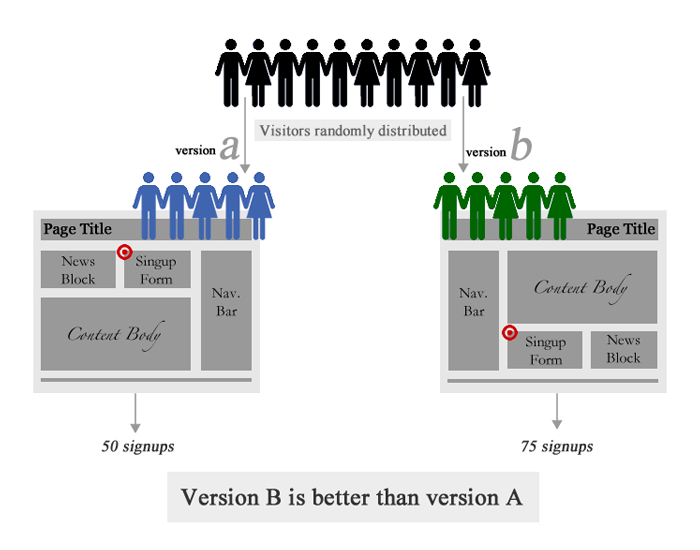
A/B testing is a way to test whether one version of a page is more effective than the other. This test can be done on a webpage where two different versions of the same page are shown randomly to the visitors. Then with the help of analytics tools like Google Analytics, Unbounce, etc., information can be gathered and analyzed about the interaction.
12. Piecemeal MVPs
Piecemeal MVPs mean building a demo of your product using existing tools. Instead of investing resources and time into developing anything on your own, you can use existing platforms, tools, and services to build an MVP.
For instance, Groupon is the best minimum viable product example of piecemeal MVP. What Groupon did was built a WordPress website with Apple mail and an AppleScript that generated PDFs for the orders. This way the effort and cost of building an MVP became much less than anticipated.
13. PPC campaigns
Running PPC campaigns might be counterintuitive but you will be must use PPC campaigns at least once for your actual product MVP validation efficiently.
You can reach out to your desired target audience with the right demographics and helps you run tests for features that are most appealing in your MVP. For starters, you can pitch in $100 and see the results. If your MVP does not get any leads, then either your ad is flawed or your idea is not good enough.
14. Micro-Surveys
The disadvantage of general surveys is that they are too long and at times become quite annoying for online users. Users either skip the survey or fill it in a hurry and that is why these fail to give accurate results. In micro-surveys, you can ask a couple of MVP survey questions to which you will get honest answers. Micro-surveys have two to three questions that online users find easy to answer and are very quick in nature.
15. Ad campaigns

Platforms like Google and Facebook are the go-to platforms when it comes to running ad campaigns. Before the product is even launched, you can put up ads and see how many users engage with it. With an insights dashboard, you can track and analyze clicks, engagement, and other important behaviors.
16. Services and Platforms
Using SaaS and PaaS to build an MVP can help you in testing your MVP quite well. There are multiple choices to choose from and the building becomes easier and faster. These software and platforms also help in increasing the reach of the product. Usually, MVP developers face problems like compatibility of the app, mobile-friendly design, and other code-based issues which can be eliminated as these tools already have taken care of those issues.
17. Manual-first MVP
A manual-first MVP (Wizard of Oz) is a way of interacting with actual customers rather than running an online survey. This MVP testing technique shows a picture of a fully completed product, and when a user orders it, you deliver it manually. In this MVP idea validation, the users are getting what they see. Even though it takes a lot of effort, it is worth it to get the right validation.
18. Concierge MVPs

The concierge MVP test is similar to the manual-first MVP test but instead of faking the products, the products are real. This MVP tests and answers whether the users are willing to use and pay for your products or not. An online dress rental business, Rent the Runway, tested its business model with this MVP. They were able to find the right answer to their questions that helped them develop a successful product for the market.
19. Digital prototypes
Digital prototypes can be used to display the actual product in a digital way. Wireframes can showcase products such as apps, games, etc. These prototypes can be anything from screenshots to digital sketches to mockup apps that will validate the user experience on a different level. A startup app development company can easily assist you in creating digital prototypes with professional tools and validating your MVP with robust strategies.
20. Single feature MVP
Sometimes testing the one and only strong feature of your product results in the best conversion. Getting feedback on that one specific feature can help the product validation rather than focusing on multiple features all at once. It also helps in narrowing down the customer base and allows better focus. This testing is considered one of the most advised MVP testing strategies by MVP development companies.
21. Software testing
If nothing works then there are multiple software available for the MVP testing process. An MVP software can help you get the right validation on elements structure or placement but your core audience is out there and feedback from them is the best validation for your product. Software such as QuickMVP, OpenHallway, Five-second test, Justinmind, InVision, etc. is some great ones to get your MVP tested.
Final Note
I hope you got an idea about how to measure your MVP success. However, creating and testing an MVP will invariably take time and resources, but it should never be considered a waste. It is a consistent process of Build-Measure-learn until you develop the best version of your MVP or validate your basic app idea. After all, what if you end up taking to market a product or service that nobody wants? Use the above-mentioned MVP testing techniques to get the most out of your product. If you have any further inquiries on how to test MVP or want MVP development services in the US, you can contact an MVP app development company like Appinventiv to get started.


- In just 2 mins you will get a response
- Your idea is 100% protected by our Non Disclosure Agreement.

10 Future-Ready Tech Business Ideas to Launch in Brisbane (2025 Edition)
Key takeaways: Brisbane’s Tech Surge: With $10.8B in value and 81% growth, Brisbane offers strong government backing, top talent, and global reach. Funding Boost: Programs like Advance Queensland have funded 8,100+ startups with up to $250K each. Scalable Sectors: AI healthcare, AgTech, and renewables thrive with solid R&D and industry support. Brisbane is buzzing with…

16 Game-Changing Startup Ideas in the UAE You Haven’t Considered Yet
Key takeaways: The UAE's strategic location and government support make it an ideal startup hub. AI, fintech, and green tech are booming sectors with vast opportunities for startups. Over $11 billion in funding is fueling growth in key industries like AI and e-commerce. Government initiatives like the “Dubai Future District Fund” support entrepreneurial growth. Niche…

10 Innovative Business Ideas in the Oil and Gas Industry for 2025
The oil and gas industry is in the midst of a high-stakes digital revolution. With rising global energy demands, increasing pressure to reduce emissions, and the complexity of upstream and downstream operations, enterprises are turning to software-first solutions to stay competitive. In 2025, this shift is not just a matter of time; it's transformative. According…








